Coastal Turf has over 25 years of experience of creating beautiful quality lawns. Over this time we have learnt a thing or two.
These are our policies and best management practices set out by Coastal Turf so our customers gain confidence in choosing their turf and ensuring that their new turf will create a quality lawn for years to come. We send along an installation and after care guide for you to DIY. We are always available on the phone if you need extra help.
Try following these simple step be step guidelines –
Quick Links
Site Preparation
The quality of your site preparation will determine the quality of your new lawn. The flatter and smoother the area is before the turf is laid the higher quality your lawn will be. Prepare your area first.
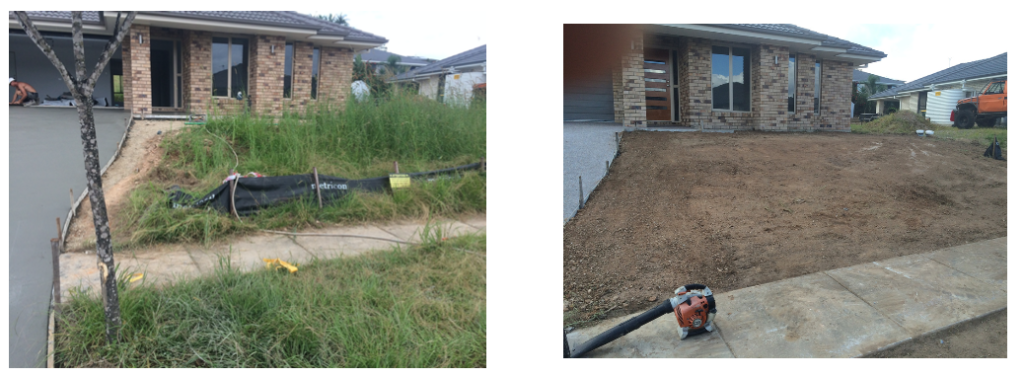
- Remove all any existing vegetation from the site to be turfed.
- Remove all the debris and rubbish from the site.
- If need be spray the area to be turfed to get rid of any weeds. Spraying with a pre-emergent is a really good idea. If you use a pre-emergent make sure you use at-least 2-3 days previous to laying turf.
- Ensure that you know how the water will fall. Making sure that the water nows away from your home. (for tips on this talk to our Crew)
Topsoil
The type of soil you want to get under your new turf will depend upon where you are. For people whose lawns are close to the beach, with a sandy loam already under feet, a Garden Soil Mixture is the best under turf soil. The organics and compostables will create aerobic conditions perfect for your new lawn to thrive in.
For peoples whose new lawn areas already have a heavy base, like a clay soil, a sandier screen organic under turf soil will mean that the water can drain away form the roots easily and not create conditions perfect for fungus to breed.
Always ask your local landscape yard if their Screened Organic Topsoil has chicken manure and compost incorporated into the soil mixture. Often turf underlay topsoil is only a sand and loam mixture. The chicken manure and compost supply microbes into the soil, these microbes then break down old grass clippings into organic matter and fertilizer for the grass. This means that your new turf does NOT need to rely on chemical fertilizers or water from irrigation once established. VERY WORTHWHILE!
If you are unsure which soil is best for your new lawn, get in touch!
The amount and quality of your topsoil will have a DIRECT effect on the quality of your new lawn.
- Incorporate a minimum of 50mm (2 inches) of good quality soil evenly throughout the entire turf area.
- The spreading of the soil needs to create the desired landscape (flat and level or undulating hills depending on the desired result)
Note: Any undesired rises or falls will be magnified by the turf and may result in drainage problems.
- To ensure the turf and any hardscaped areas are flush the topsoil should be approximately 25mm below the hardscape height.
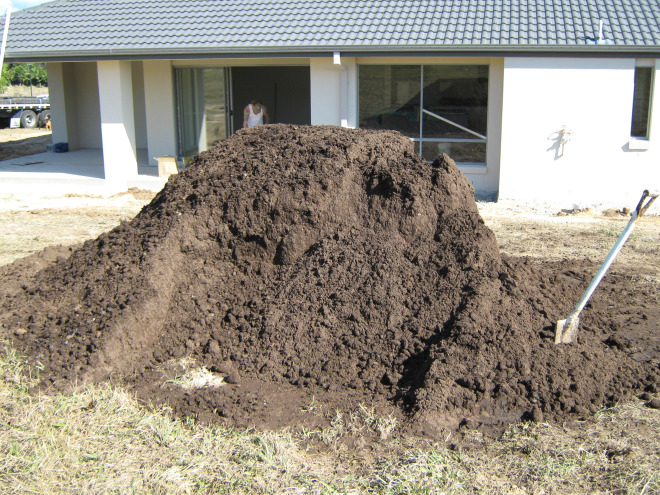

Measuring
To measure the area or amount of turf (sqm) you require simply measure the length times the width. For example in the box below the length is 10m and the width is 6m, therefore the area or the amount of turf required is (10 x 6) 60sqm.
NOTE: You can even use our on-line turf calculator!
In areas that are strange shapes the easiest way to measure them is to divide it into smaller shapes and add up each individual area. For example in the diagram below, the area can be divided into 2 different areas (area A and area B). The area of A is (10m x 10m) 100m 2. The area of B is (5m x 10m x 0.5 {because the area of a triangle is half of the area of a rectangle}) 25m 2. Therefore the total area = 125m 2 (100m 2 + 25m 2)

NOTE: Coastal Turf recommends a 4% wastage factor will be incorporated in all turf areas. This is because the minimum piece of turf used is to be 400mm x 400mm, the 4% wastage factor incorporates the lost turf in ‘cut-offs’ that are smaller than that.
Grass Selection
- Take your time and select the right type of grass for your area, situation and needs (dependant on shade, traffic, sunlight, water requirements and maintenance).
- Selecting the most suitable turf grass variety will result in the best quality lawn.
- To help you choose please refer to our Turf Varieties info
- Our team will recommend the best lawn for your home based on the information you give us.
- Or Contact US to get one of our Installers come not only help you make the decision on the best turf for your new Lawn, but take all the stress of the installation as well.
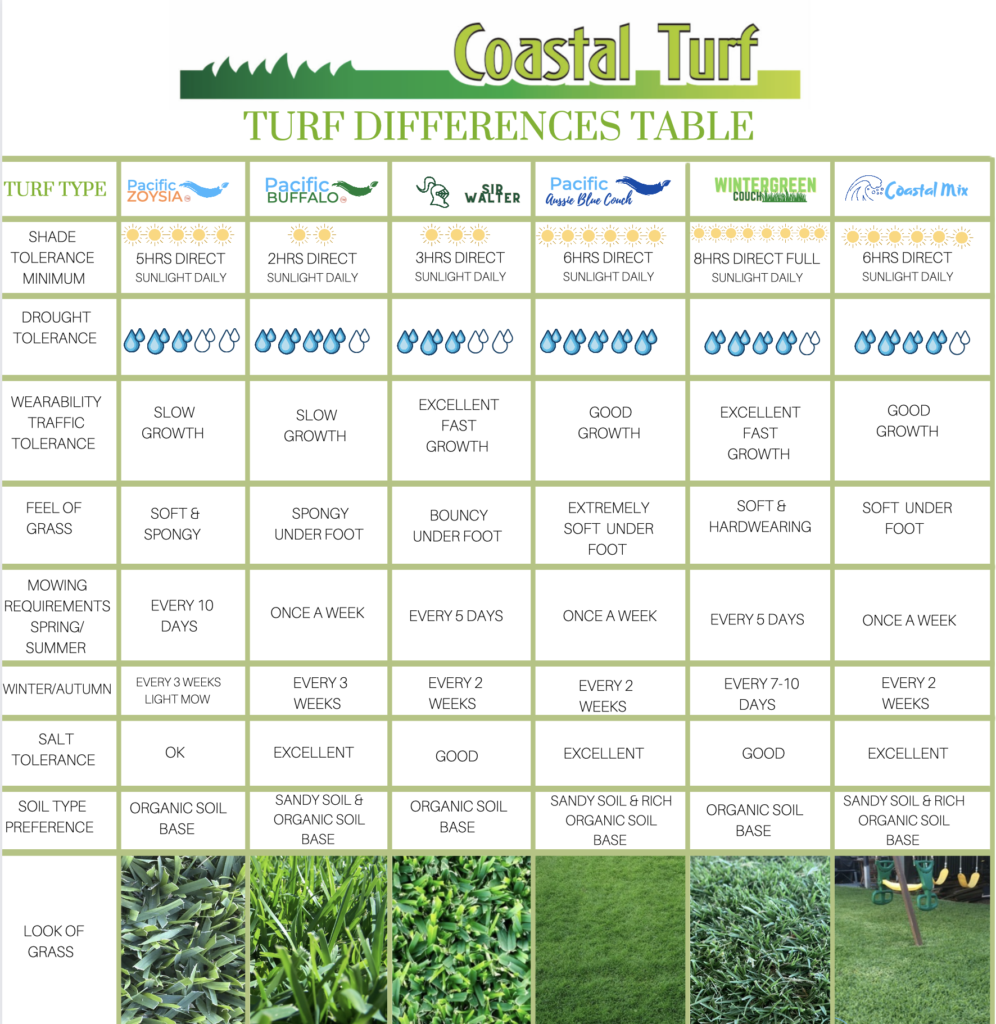
Installation of your New Lawn!
- A slow release organic fertiliser is recommended to be spread evenly over the area to be turfed. We use and recommend our Lawn Play under turf starter
- The easiest way to lay the turf is to lay around the perimeter or border of the area first, then run the strips of turf along the longest side of the area. This reduces the amount of overlaps of turf at the end of each run of turf and when there is an overlap, it is an overlap of turf and turf not turf and concrete or turf and a fence – making it much easier to cut.

- Ensure there are no gaps between any of the pieces /slabs of turf. All turf pieces should be closely butted up with each other. It is best to lay the individual pieces of turf in a brick like pattern, this ensures that there is a leading edge to follow.
- The turf will be laid in sectors, ensuring that each sector maintains the desired preparation quality. This prevents the preparation of the site being destroyed by traffic (by both foot and machinery).
- Ensure that all turf has direct contact with the soil. The best way to achieve this is by rolling the turf with a turf roller.

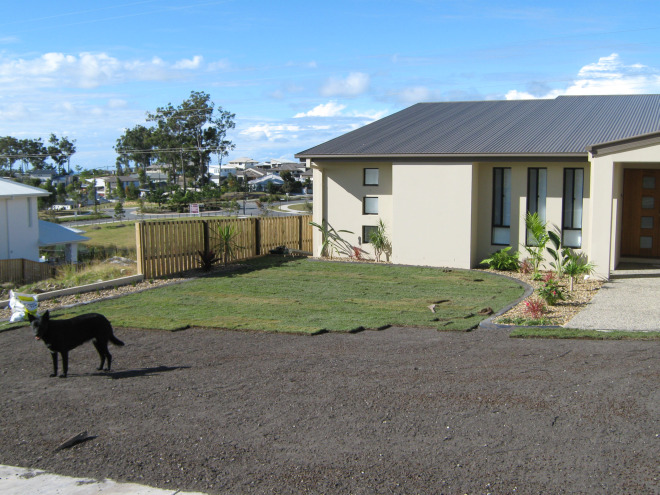

Post Installation
- Irrigate/Water the turf for approximately 15 minutes within 30 minutes of laying the turf.
- Irrigate/Water the turf after rolling, following Coastal Turf’s aftercare guide.
- Sit back, relax and enjoy your new lawn.
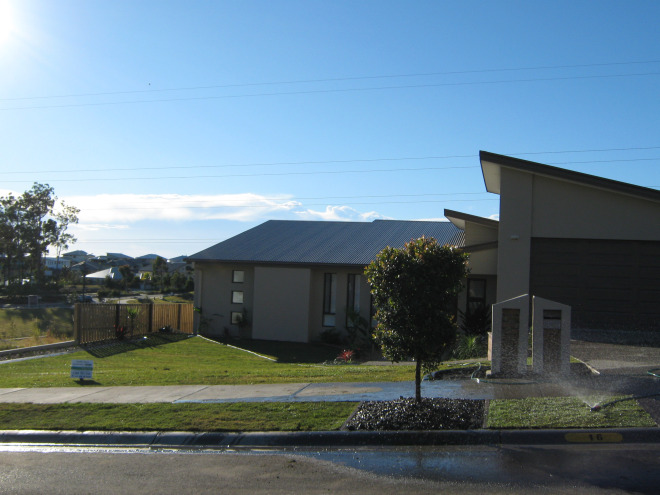
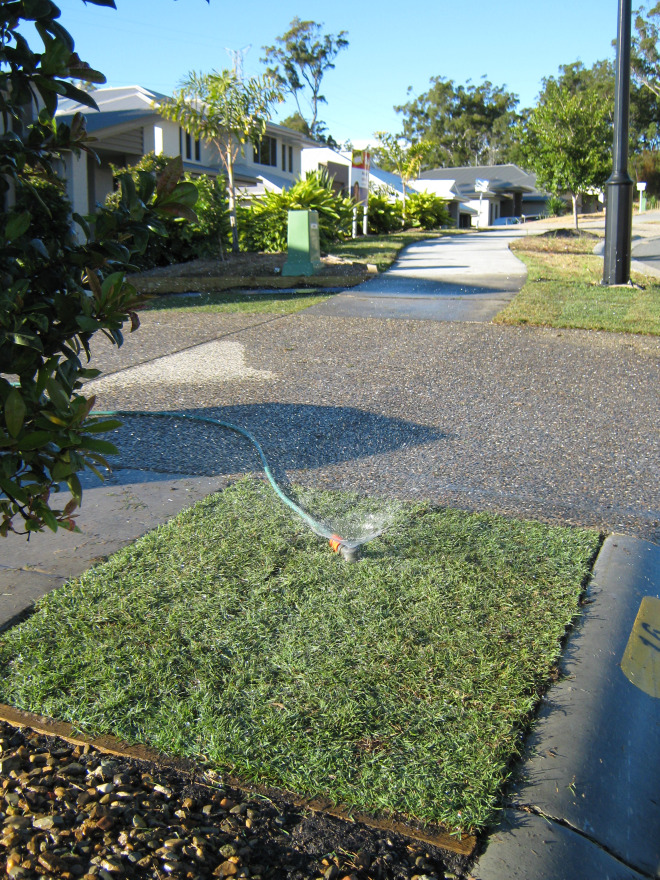
Establishment Period
- Coastal Turf provides all of our customers with an establishment and ongoing care recommendation sheet with detailed information.
- All customers should follow local council watering guidelines for the establishment period of the turf (approximately 14 days).
Don’t forget any questions or concerns get in touch with us. We are more than happy to help.

